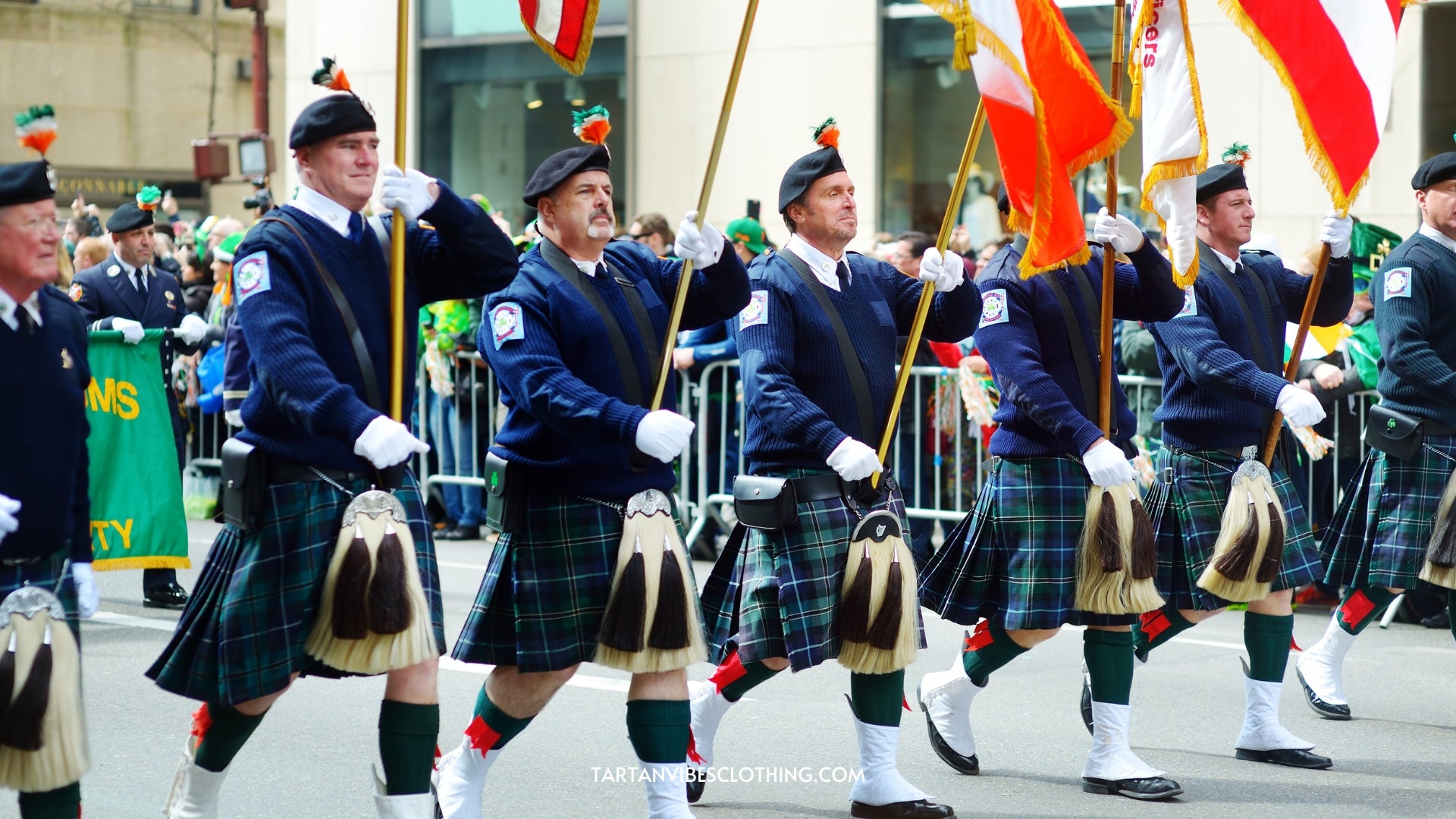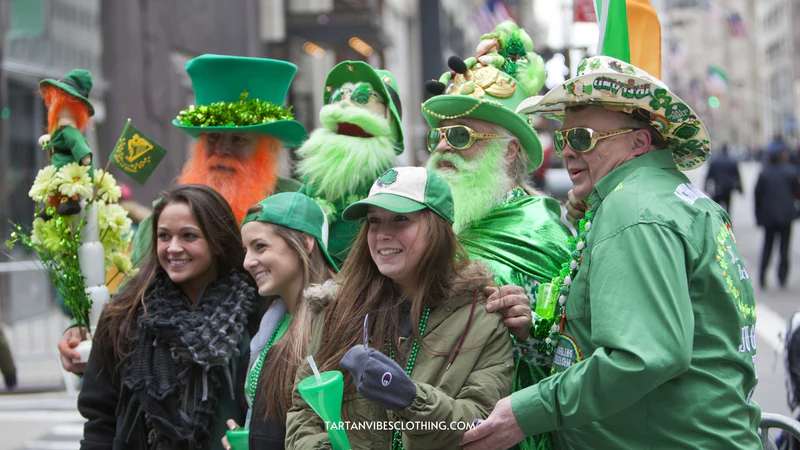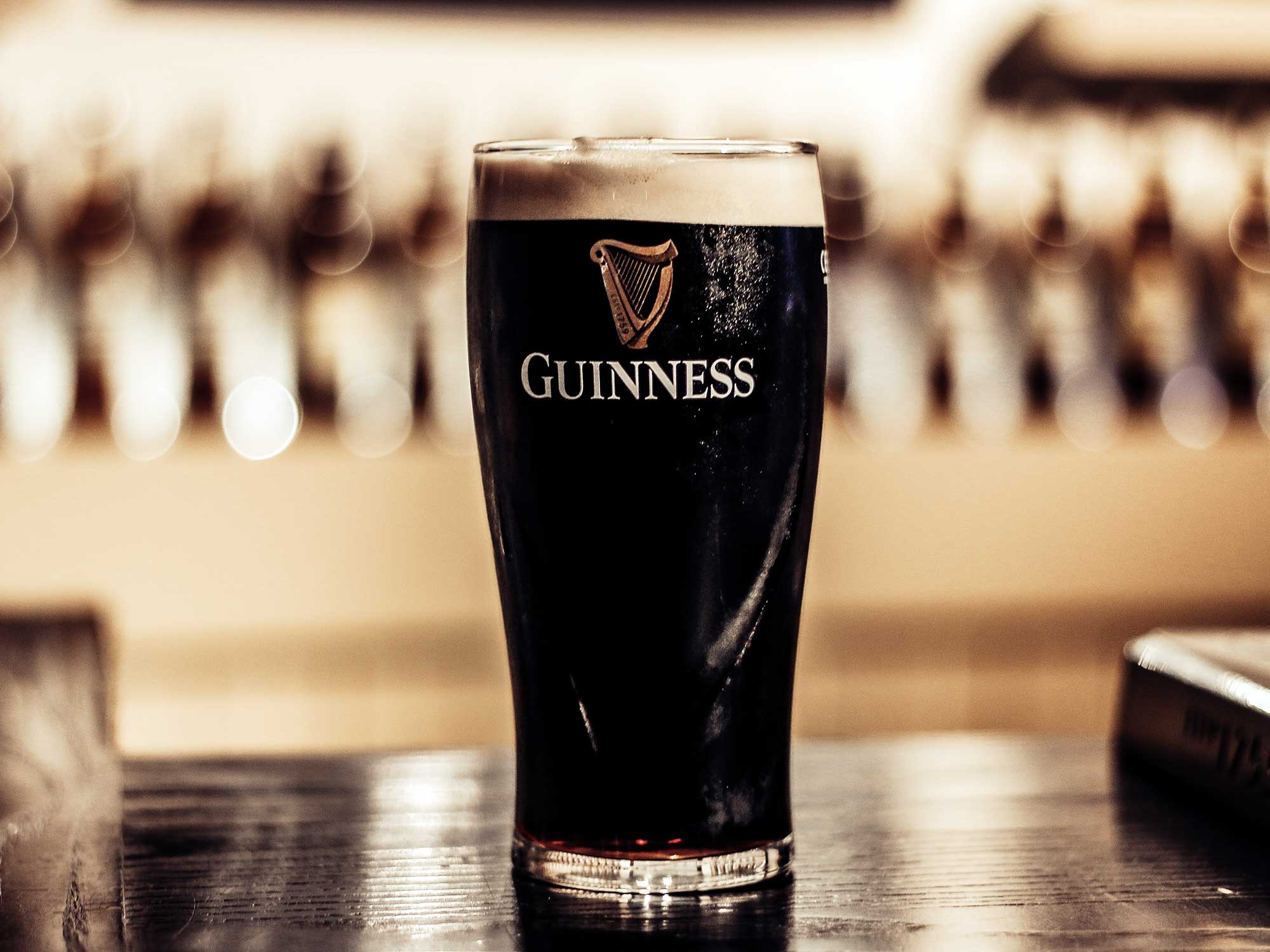Table of Content
Saint Patrick's Day—just hearing the name probably makes you think of shamrocks, parades, and a lot of green. But this holiday isn’t just about wearing green or sipping Guinness. There is a treasure trove of Saint Patrick’s Day facts rooted in history, culture, and quirky traditions. This holiday has become unique, from its Irish origins to modern-day festivities celebrated worldwide. Ready to uncover the truth behind the holiday? Let’s dive in!
Who Was Saint Patrick and Why Do We Celebrate Him?
The Life of Saint Patrick
Saint Patrick, the patron saint of Ireland, wasn’t actually Irish—he was born in Roman Britain around 385 AD. At the age of 16, he was kidnapped by Irish raiders and enslaved in Ireland, where his faith grew stronger. After escaping six years later, he studied Christianity in France and returned to Ireland as a missionary. Patrick’s work in converting Irish pagans to Christianity established his legacy as a symbol of faith and resilience.

The Legend of Saint Patrick
Did Saint Patrick drive all the snakes out of Ireland? While it’s a popular tale, the truth is Ireland never had snakes due to its icy climate and isolation. The story is likely symbolic of Saint Patrick’s efforts to eliminate pagan practices and promote Christianity, as snakes often represent evil in Judeo-Christian tradition.
Another legend tells of Patrick’s walking stick, which miraculously took root and grew into a tree during a lengthy sermon. While its truth is debatable, it underscores Patrick’s dedication to spreading faith in Ireland.

The Origins of Saint Patrick’s Day
Saint Patrick’s Day began as a solemn religious feast on March 17th, commemorating Patrick’s death in 461 AD. Over time, Irish immigrants transformed the holiday into the vibrant parades and festivities we know today, celebrating Irish culture worldwide.
Historical Saint Patrick’s Day Facts
1. Did you know Saint Patrick wasn’t even Irish?
That’s right! Saint Patrick was born in Roman Britain, likely in what is now Wales or Scotland, around 385 AD.
2. Did Saint Patrick Banish Snakes?
As fascinating as the legend is, snakes never existed in Ireland due to its cold climate and geographical isolation. Scholars believe the story symbolizes Saint Patrick’s efforts to rid Ireland of paganism, with “snakes” as a metaphor for evil or un-Christian practices. This is one of the enduring St Patrick's Day facts highlighting the holiday’s symbolic nature.
3. What’s the Origin of the Saint Patrick’s Day Parade?
Did you know the first St. Patrick’s Day parade didn’t occur in Ireland? It was held in Boston in 1737 by Irish immigrants celebrating their heritage. A more famous parade in New York followed in 1762, started by Irish soldiers serving in the British Army. Ireland itself didn’t host its first parade until 1903 in County Waterford.

4. Why Is March 17th Important?
March 17th marks Saint Patrick's death in 461 AD at Saul, County Down. This date became a feast day to honor his legacy and contributions to Christianity. While his burial site remains uncertain, Down Cathedral in County Down is widely believed to be his final resting place. However, other claims point to Saul or even Glastonbury Abbey in England.
5. Saint Patrick Was Never Officially Canonized
Despite being one of the most celebrated saints in history, Saint Patrick was never formally canonized by the Catholic Church because the canonization process didn’t exist during his time. Regardless, he is widely recognized as Ireland’s patron saint.
Cultural and Symbolic Saint Patrick’s Day Facts
6. Why Do We Wear Green?
While green is now synonymous with Saint Patrick’s Day, it wasn’t always the holiday’s color. In fact, the color originally associated with Saint Patrick was blue, often referred to as 'St. Patrick’s Blue.' Over time, green became more popular due to its association with Irish nationalism and the lush, green landscapes of the Emerald Isle.

7. What Is the Shamrock’s Significance?
Legend has it that Saint Patrick used the shamrock’s three leaves to explain the Holy Trinity—Father, Son, and Holy Spirit—to the Irish. The plant also held symbolic meaning for the Celts, representing nature and regeneration. Today, it’s an enduring symbol of Irish identity and pride. Among the many Saint Patrick's Day facts, this one is central to the holiday’s religious roots.

8. What’s the Connection Between Leprechauns and Saint Patrick’s Day?
Leprechauns, another fun Saint Patrick’s Day fact, weren’t originally tied to the holiday but became associated later due to their ties to Irish folklore. Their mischievous charm, gold pots, and ties to Irish legends make them a perfect addition to the festive spirit.

9. What’s the Tradition of Drowning the Shamrock?
One lesser-known tradition is "drowning the shamrock." At the end of Saint Patrick’s Day celebrations, revelers place a shamrock in their glass of whiskey or beer, toast to Saint Patrick, and drink. This fun custom keeps the spirit of the day alive in pubs and homes alike.
10. What’s the Symbolism of the Celtic Cross?
Saint Patrick is also credited with popularizing the Celtic cross, which combines the Christian cross with the circular symbol of the sun. This was a strategic way to merge pagan and Christian traditions, making Christianity more relatable to the Irish.

Modern Saint Patrick’s Day Facts
11. Why Is the Chicago River Dyed Green?
The Chicago River turns bright green on Saint Patrick’s Day every year. This tradition started in 1962 when plumbers accidentally discovered that their dye, used for tracking illegal sewage, turned the water green. It has since become one of the most iconic Saint Patrick's Day facts, capturing the spirit of celebration.

12. Why Was Saint Patrick’s Day Once a Dry Holiday?
Believe it or not, Saint Patrick’s Day was once observed as a strictly religious occasion in Ireland. From 1903 to the 1970s, pubs were required to close on March 17th. It wasn’t until the holiday gained a more festive, global reputation that this restriction was lifted.
13. Why Is Guinness So Popular on Saint Patrick’s Day?
What’s Saint Patrick’s Day without Guinness? This iconic Irish beer has become synonymous with the holiday, with over 13 million pints consumed globally on March 17th. Its deep Irish roots and rich flavor make it a favorite for celebrations everywhere.

14. How Do Other Countries Celebrate Saint Patrick’s Day?
Saint Patrick’s Day isn’t just for Ireland anymore! From the Sydney Opera House glowing green to Tokyo’s vibrant parades, countries worldwide add their unique flair to the festivities. Even Niagara Falls gets in on the action, lighting up green for the occasion.
15. The Global Greening Tradition Began in 2010
The "Global Greening" campaign began in 2010 when the Sydney Opera House lit up green for Saint Patrick’s Day. Since then, landmarks like the Eiffel Tower, the Great Wall of China, and Niagara Falls have joined to celebrate Irish heritage globally.
16. Why Are Corned Beef and Cabbage Popular?
Think corned beef and cabbage is an old Irish tradition? Not quite! This iconic dish was an American innovation. In Ireland, bacon was traditionally paired with cabbage, but Irish immigrants in the US. found corned beef a more affordable substitute.

St. Patrick's Day fun facts
17. What’s the World’s Shortest Saint Patrick’s Day Parade?
Hot Springs, Arkansas, hosts the world’s shortest Saint Patrick’s Day parade, spanning just 98 feet of fun and Irish cheer. This quirky fact is a favorite among St Patrick's Day fun facts lovers.
18. There’s a Town Named After the Holiday
Saint Patrick’s Day is so popular that there’s a town in Missouri named St. Patrick! This tiny town embraces its name with an Irish festival yearly and even boasts a post office that stamps letters with shamrocks.
19. Saint Patrick’s Day Crosses Into Space
Believe it or not, Saint Patrick’s Day has been celebrated in outer space! Astronaut Chris Hadfield played the Irish song "Danny Boy" on his guitar aboard the International Space Station, bringing Irish charm to the cosmos.
20. The Largest Shamrock is in Canada
The world’s largest painted shamrock isn’t in Ireland—it’s in Shamrock, Canada. This massive tribute to Irish culture spans the town square, attracting visitors worldwide.
How to Celebrate Saint Patrick’s Day Like an Expert
Traditional Irish Activities
What’s Saint Patrick’s Day without some good old Irish traditions? Indulge in hearty dishes like Irish stew, soda bread, and of course, Guinness. Attend a ceilidh (a traditional Irish dance) or enjoy live music featuring fiddles and bagpipes.
Family-Friendly Activities
For the little ones, try green-themed crafts or read them stories about Saint Patrick and leprechauns. Parades are a great way to enjoy the holiday as a family, with floats, music, and dancing that everyone can enjoy.

Global Celebrations
Each country brings its twist to the celebration. Saint Patrick’s Day parades in Japan are infused with Japanese cultural elements. At the same time, Sydney’s Opera House lights up green to showcase its Irish connections. The diversity of celebrations reflects the holiday’s global reach.
Conclusion
Saint Patrick’s Day is more than just a day of wearing green and enjoying a pint—it celebrates Irish history, culture, and pride. From its deep-rooted religious beginnings to its modern-day global festivities, the holiday embodies a unique mix of tradition and fun. Whether you’re attending a parade, sipping on Guinness, or explaining the Trinity with a shamrock, there’s something magical about March 17th that unites people worldwide. So, this Saint Patrick’s Day, let’s raise a glass to Saint Patrick and the enduring charm of Irish culture. Sláinte! ☘️
Frequently Asked Questions
What is the true story of St. Patrick's day?
Patrick, patron saint of Ireland. Born in Roman Britain in the late 4th century, he was kidnapped at the age of 16 and taken to Ireland as a slave. He escaped but returned about 432 ce to convert the Irish to Christianity. By the time of his death on March 17, 461, he had established monasteries, churches, and schools.
Why should we celebrate St. Patrick's day?
The day commemorates Saint Patrick and the arrival of Christianity in Ireland, and, by extension, celebrates the heritage and culture of the Irish in general. Celebrations generally involve public parades and festivals, céilithe, and the wearing of green attire or shamrocks.
What was St. Patrick kidnapped for?
According to Patrick's autobiographical Confessio, when he was about sixteen, he was captured by Irish pirates from his home in Britain and taken as a slave to Ireland. He writes that he lived there for six years as an animal herder before escaping and returning to his family.
What is a fun fact about March 17th?
The world's first St. Patrick's Day parade occurred on March 17, 1762, in New York City.
Why Do We Wear Green on Saint Patrick’s Day?
Green represents Irish nationalism, the Emerald Isle’s landscapes, and protection from leprechauns, according to folklore.











